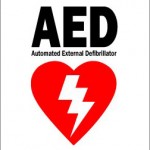LUCAS Devices: What They Are & How They Work
AEDs and LUCAS devices are two of the most commonly used pieces of medical equipment in emergency situations. Many people are familiar with automated external defibrillators (AEDs), but not everyone is familiar with the LUCAS device.
AEDs, or automated external defibrillators, are portable devices that deliver electrical shocks to the heart in order to restart it. They’re often used in cases of cardiac arrest when the heart stops beating. AEDs can be found in many public places, such as airports and schools.
LUCAS devices, or mechanical chest compressions devices, are used to provide chest compressions in CPR. They’re often used in combination with AEDs. LUCAS devices are placed on the patient’s chest and provide continuous compressions, which help to circulate blood and oxygen to the brain. Both AEDs and LUCAS devices are easy to use and can be lifesavers in an emergency situation.
In this blog post, we’ll briefly explain what the LUCAS device is and how it works. We’ll also compare and contrast the LUCAS device with AEDs so you can better understand the difference between the two.
What Does The LUCAS Device Stand For?

The LUCAS CPR machine is a device that helps deliver continuous chest compressions during CPR. It was developed by Lund University in Sweden and is now used in hospitals and ambulances all over the world. The brand name stands for “Lund University Cardiac Arrest System.”
The LUCAS machine attaches to the chest of the patient and provides consistent, even compression throughout the entire CPR process. This helps improve blood flow and increases the chances of survival for the patient.
How Does The LUCAS Device Work?
The LUCAS device is an automatic CPR machine that provides high-quality chest compressions. It is easy to use and can be deployed in a variety of settings, making it ideal for first responders and medical professionals.
The LUCAS device consists of a silicone sleeve that is placed over the patient’s chest and a hand-held unit that delivers the compressions. Once activated, the device will deliver compressions at a rate of 100 per minute.
The machine can be adjusted to deliver either shallow or deep compressions, depending on what is appropriate for the patient’s situation. The LUCAS device has been shown to improve survival rates and is an important tool for saving lives
How Should LUCAS Be Positioned On The Chest?
When performing CPR on an adult, it is important to position the LUCAS chest compression machine correctly. The patient should be laid flat on their back on a firm surface. The LUCAS device should be placed in the center of the patient’s chest, directly above the sternum. The patient’s head should be tilted back slightly, and their chin lifted to open the airway. Once the machine is in position, the operator should press the start button to deliver automatic compressions.
How Much Does A LUCAS CPR Machine Cost?
The cost of the LUCAS Chest Compression System varies depending on the model and accessories, but the average price is around $16,000.
There are a variety of Lucas CPR machines on the market, and the price will vary depending on the model you choose and the accessories.
The most basic model starts at around $8,000, while the more advanced models can cost up to $25,000. Of course, you also need to factor in the cost of supplies and maintenance. However, many hospitals and other medical facilities lease or rent these machines, so it is definitely worth investigating all your options before making a purchase.
Ultimately, the best way to determine how much a Lucas CPR machine will cost is to get in touch with a representative from the company. They will be able to provide you with a quote based on your specific needs.
Is The Lucas Cpr Device Effective?
The LUCAS CPR is designed to be easy to use, and it has been proven to be effective in providing chest compressions that are of high quality and consistent with international guidelines. The LUCAS machine has a number of advantages over manual chest compression techniques.
- The machine can provide continuous compressions, which is not possible with manual techniques. It can also deliver consistent, high-quality compressions regardless of the operator’s fatigue level.
- The LUCAS machine is simple to operate and can be used by a single rescuer, and it does not require special training to operate.
- It is the smallest and lightest device of its kind and can be easily transported to the patient’s side. and can be used in a variety of settings, it comes with a carrying case for easy transport. It is durable and can withstand multiple uses and is also backed by a strong warranty from the manufacturer.
- It can be used in a range of prehospital and hospital settings including ambulances, hospitals, and homes.
- The machine can be used on adults and children of all ages and it comes with an instruction manual that is easy to follow.
- The LUCAS CPR machine has been proven to be effective in a variety of clinical studies and has been shown to improve survival rates in out-of-hospital cardiac arrest patients. It is recommended by leading resuscitation organizations such as the American Heart Association.
Does The LUCAS Device Break Ribs?
The LUCAS automatic chest compression machine is a device that is used to provide CPR in situations where manual chest compressions are not possible or effective.
There is currently no evidence that the LUCAS device breaks ribs. In a study of 100 patients who underwent chest compressions with the LUCAS device, there were no reports of broken ribs. Another study looked at 300 patients who received chest compressions with the LUCAS device and found that only one patient had a broken rib. These studies suggest that the LUCAS device is unlikely to break ribs. However, it is possible that the device could cause other injuries, such as contusions or abrasions.
Understanding The Difference Between An AED And The LUCAS Devices

When it comes to Cardiopulmonary Resuscitation (CPR), every second counts. If CPR is not administered immediately, the victim’s chance of survival decreases significantly. As a result, it is important to have the proper equipment on hand in case of an emergency. Two devices that can be used for CPR are automatic external defibrillators (AEDs) and LUCAS chest compression machines.
AEDs are automatic CPR machines that can be used by anyone, regardless of training level. They are relatively simple to use; once the victim’s clothing is removed, pads are placed on their chest and the machine is turned on. The AED will then give step-by-step instructions on how to properly administer CPR. Prices for AEDs range from $800 to $1,500.
LUCAS chest compression machines are designed for use by trained medical professionals. Unlike AEDs, they do not provide instructions on how to administer CPR; instead, they deliver a set number of compressions per minute. The LUCAS device is also more expensive than an AED, with prices starting at $8,000. However, some experts believe that the LUCAS machine is more effective at delivering CPR compressions, making it worth the extra cost.
Conclusion:
AEDs and LUCAS devices are both important pieces of equipment for use in CPR situations. While AEDs are simpler to operate and can be used by anyone, the LUCAS machine is more effective at delivering chest compressions. It is important to understand the difference between these two machines in order to make the best decision about which one to use in an emergency situation.
CPR Courses & First Aid Training & Certifications
Adult-Child-Infant CPR/AED & First Aid Training
Adult CPR/AED & Standard First Aid Training
Adult-Child-Infant CPR/AED Training
Online Adult, Child, Infant CPR Classes & First Aid Training
Online First Aid Course & Certification
Online First Aid Course & CPR Certification Canada
Check out our other CPR & First Aid Related Articles:
INFANT CPR CERTIFICATION & ITS IMPORTANCE
THE IMPORTANCE OF TAKING BLS TRAINING
WHAT IS THE DIFFERENCE BETWEEN CPR AND AED TRAINING?
WHEN TO USE A MANUAL OR AUTOMATIC EXTERNAL DEFIBRILLATOR
10 THINGS YOU DIDN’T KNOW ABOUT CPR
THE AMERICAN HEART ASSOCIATION OR RED CROSS: WHICH IS BEST FOR CPR CERTIFICATION?
=================================================================
Meta title: LUCAS Devices: What They Are & How They Work
Meta description:AEDs and LUCAS devices are two of the most commonly used pieces of medical equipment in emergency situations. Many people are familiar with automated external defibrillators (AEDs), but not everyone is familiar with the LUCAS device.
=====================================================================




